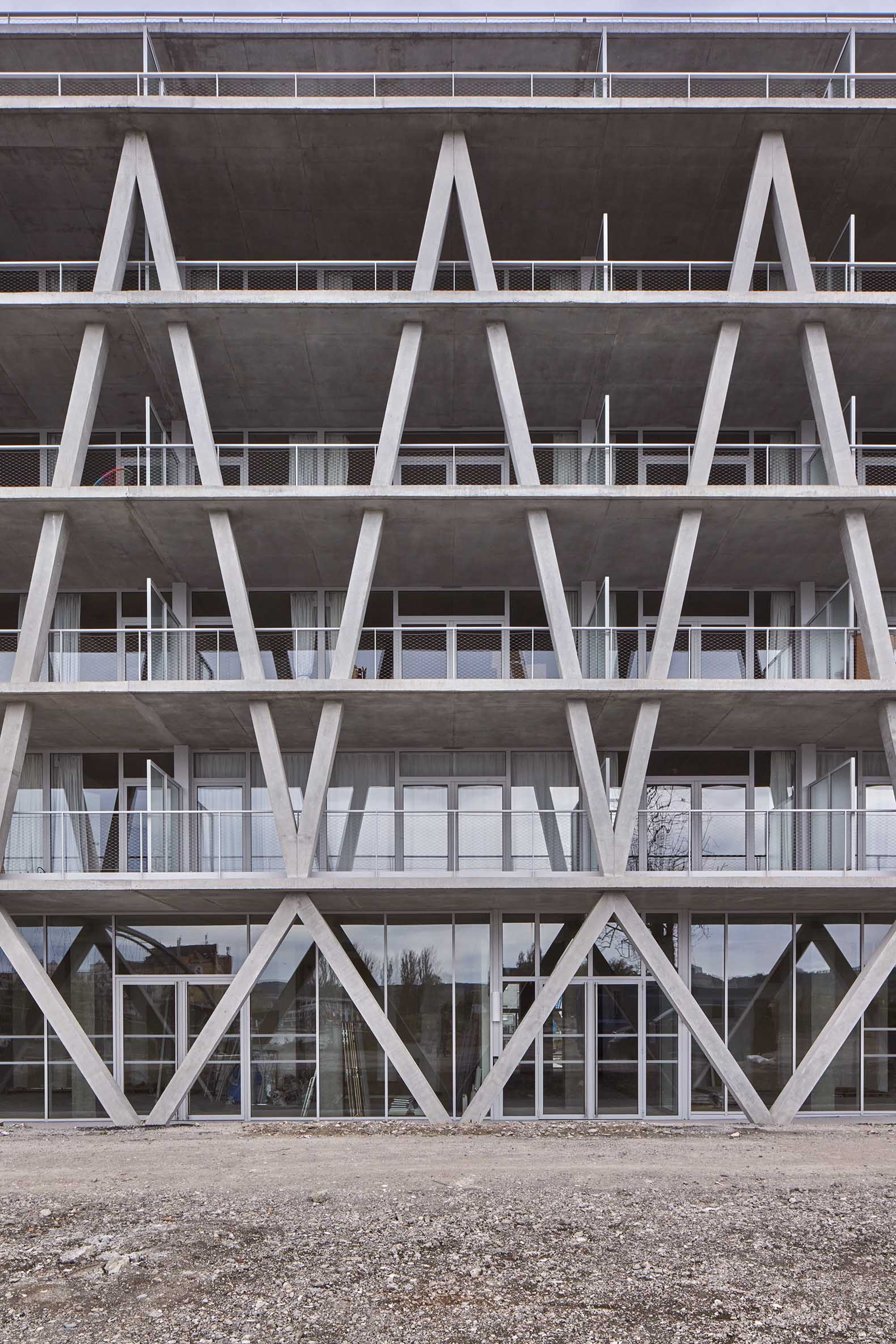
The proposal by Triptyque, as part of the overall intervention and landscaping (each studio has carried out a project), has been designed following three ideas: to open Huningue to the river by creating a new relationship with water, to place the city in the Basel agglomeration with an emblematic project and to offer Huningue a new place to live in an exceptional way at the heart of the green network. Each building, while affirming its uniqueness, contributes to the realization of this city project.
The project houses spacious apartments on the first four floors, with a 4.5-metre-high portico, shops on the first floor, as well as, a bright lobby. Surrounded by an interesting external structural mesh, the building establishes a continuous visual and physical connection between the interior spaces and the surrounding environment, providing spectacular views and a unique experience for residents.

Link Building by Triptyque Architecture. Photograph by Triptyque Architecture.
Project description by Triptyque
The Les Jetées district, located in Huningue - a French city on the border with Germany and Switzerland - is part of one of Europe's most dynamic regions and is an extension of the city centre. The architectural and landscape design of the district was guided by three main premises: to open up Huningue to the River Rhine, to integrate it with Basel, in Switzerland, and to offer an exceptional quality of life to its residents.
French-Brazilian firm Triptyque Arquitetura designed the Link Building with a view to improving the local quality of life. Inserted in the first phase of the neighbourhood's development, the building was completed in 2023 with a clear focus on contemporary architecture and sustainability.
The project houses spacious apartments on the first four floors, with a 4.5-meter-high portico and stores on the first floor, as well as a bright foyer. Dressed by an external structural grid, the building establishes a continuous visual and physical connection between the internal spaces and the surrounding environment, providing a unique experience for residents.

Inspired by Brazilian pilotis, the building's structural grid resembles the floating platforms of the Rhine River, opening up to the world through the design of the slabs and facilitating the gradual transition between public and private areas.
The project also incorporates sustainability principles, such as optimizing the use of materials and a precast structure that reduces environmental impact and improves working conditions on the construction site.
These features highlight Triptyque's commitment to architectural innovation and respect for the environment, contributing to the positive evolution of Huningue and offering a more integrated and sustainable urban environment.
























































